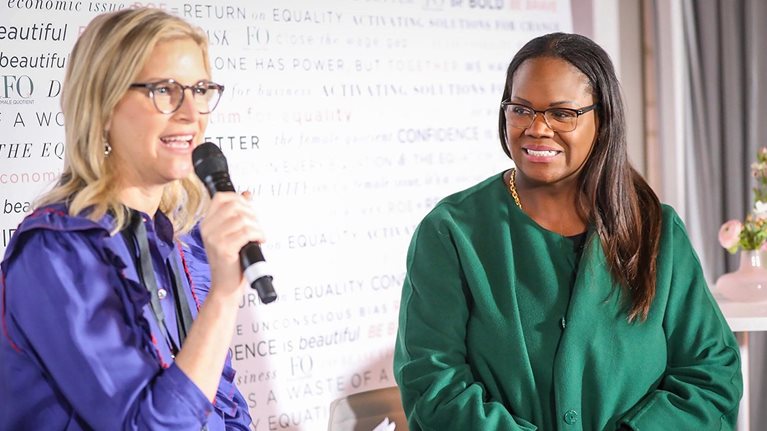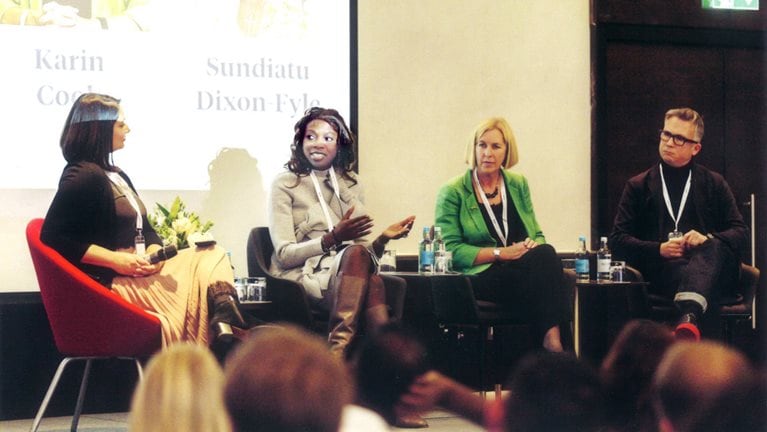We have just published Delivering through diversity, the follow-up to our 2015 seminal report Why diversity matters, which showed that more-diverse companies perform better financially. We sat down with one of the authors, Vivian Hunt, to understand why diversity has been a theme that has so strongly influenced her life and career and why our clients care so much about it.
Diversity’s significance in her life started long before Vivian even had the words to describe what “diversity” meant. “My father was in the US Air Force, and we moved for each of his postings. Before I turned 12, we had lived in the deep South, the Northwest, and the heartland of the United States and in Japan. By the time I was 12 we moved to Boston, and I knew the thrill of meeting people and being surprised by the views of different cultures. Discovering the idiosyncrasies that made each person unique and listening to their stories taught me that everyone has a history and different perspective that can add value.”
After studying at Harvard and spending time as a midwife with the US Peace Corps in rural Senegal, Vivian arrived at Harvard Business School “convinced that excellence arises from the collective power of diverse minds,” as she states it.

“I hoped to be a leader who could bring out the best in diverse talent—with different genders, socioeconomic backgrounds, skills, business experiences—so the group would achieve higher quality outcomes,” she remembers. And she has stayed true to that aspiration.
Her more “formal” diversity journey started in 2014, when she and her family had lived in the United Kingdom for nearly 20 years. After becoming the office manager of the firm’s UK and Ireland office, Vivian found that her background was often the first thing that CEOs and other leaders would ask her about.
“People were curious and surprised and tended to focus on my inherent traits—such as being an Afro-Caribbean American woman—rather than the strengths I had developed through education and experience,” Vivian explains. “It led to conversations about the importance of intrinsic characteristics versus acquired traits and the value of diversity,” she continues, “but I found that we didn’t have a fact base to point to. The goal of creating this fact base and quantifying the value of diversity was what inspired our research.”
...everyone has a history and different perspective that can add value.
Our first report, Why diversity matters, which Vivian coauthored, was an immediate hit. Three years later, it is still one of the firm’s most downloaded reports—it has clearly struck a chord. The report demonstrates that there is a strong positive correlation between diversity in a company’s leadership and its financial performance. “It makes a factual, compelling case that resonates powerfully with our clients, even though the moral argument for pursuing this agenda often comes first. It shows that an inclusive, diverse top team brings a variety of perspectives that results in better decision making, leading to productivity, growth, and improved performance” explains Vivian.
The recently published follow-up report, Delivering through diversity, reaffirms the case for diverse and inclusive leadership, with a global data set of more than 1,000 companies, and compares findings across seven industry sectors.

“It found that companies in the top quartile for ethnic and cultural diversity on their executive teams were 33 percent more likely to experience above-average profitability than companies in the fourth quartile. Yet ethnic and cultural diversity on executive teams is low. In the United States, black Americans comprise 10 percent of US graduates but hold only 4 percent of senior-executive positions. The patterns are similar for Hispanics, Latinos, and Asian Americans. In the United Kingdom, the disparity is even greater: 22 percent of university students identify as black and minority ethnic, yet they make up only 8 percent of executives in our sample,” explains Sundiatu Dixon-Fyle, an Associate Partner in our London office and coauthor of the report.
The latest report also addresses the other half of the “inclusion and diversity” equation—inclusion—and what companies can do to make this agenda work for them. Being invited to the party is one thing, being asked to dance is what really matters: a business might have minorities represented, but companies can only develop their potential if the whole workforce embraces an inclusive mind-set.
Easier said than done—for any organization, including our own. But the report profiles extraordinary examples of what works in case studies. Vivian believes that inclusion and flexible working practices are a key differentiator – leaders see the necessity of building an inclusive, nimble organizational culture. The culturally fluent will lead in our increasingly complex, volatile era. They are the ones equipped to bring together colleagues from all backgrounds to reach their full potential and make better decisions – and crucially for our clients, this means increased productivity and improved performance.
What will the third Diversity Matters report look at? “A broader, more varied definition of diversity, including variables such as age and socioeconomic background,” says Vivian, as well as “better insights from more powerful analytics and more case studies to expand the global perspective.”